80 Years of Freedom in Wassenaar
80 Years of Freedom is not to be taken for granted. Cherish your freedom!
This year we commemorate the five war years in which the Netherlands was occupied and celebrate that we have lived in freedom for 80 years since May 5, 1945. In the municipality of Wassenaar we also pay attention to this special year of remembrance. 80 years is a lifetime and unfortunately there are fewer and fewer people who can pass on the memories. It is important that we continue to tell the story and that we cherish our freedom, especially in these times when our rule of law is under pressure.

Wassenaar Municipality, in cooperation with various (social) organizations in Wassenaar, has developed a calendar of events in the context of 80 Years of Freedom. From January through December 2025, various events will take place in our village to reflect on the horrors of WWII culminating in the big Liberation 80 Years of Freedom celebration on May 5.
Some of the times when we commemorate together are during Holocaust Remembrance Day on Jan. 27, the commemorations of French commandos on Feb. 27, Remembrance Day on May 4 and Liberation Day on May 5.
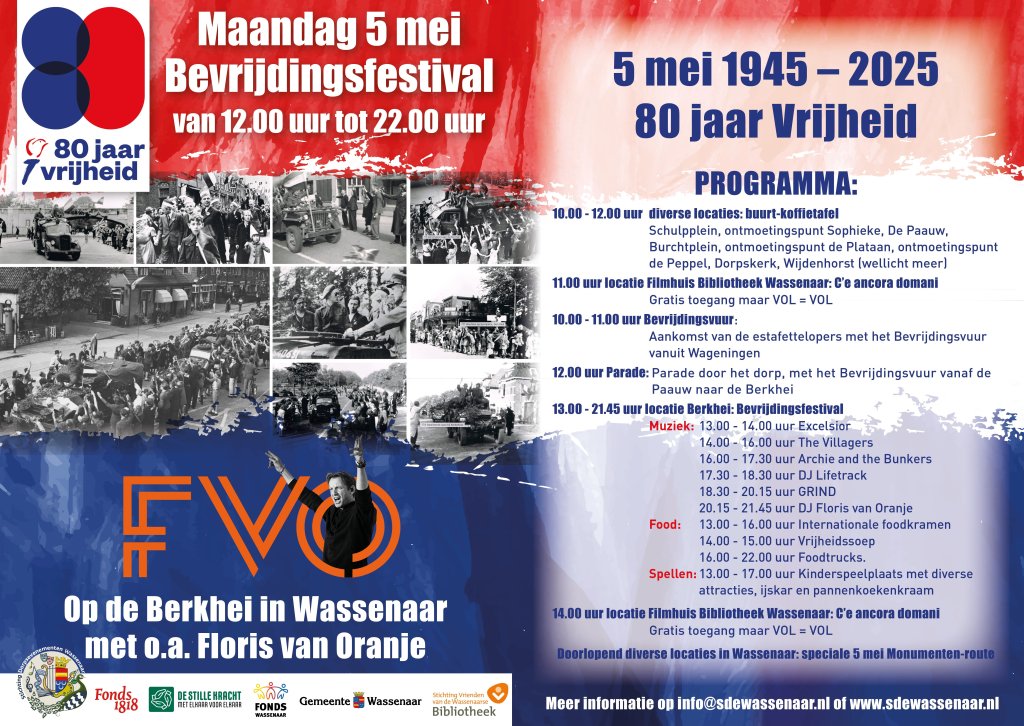
New year's address by mayor Leendert de Lange
Mayor Leendert de Lange also paused in his New Year's address to commemorate the beginning of 80 years of freedom.
Liberty tree planted in Schulpplein: a lasting symbol of freedom
The "Freedom Tree" was planted in Schulpp Square on Wednesday, March 19. The old, dead tree that graced the square for many years made way for a new, Indian Horse Chestnut tree. This tree, chosen by Team Groen of the municipality of Wassenaar, symbolizes resilience and connectedness. The placement of the tree marks an important moment in the run-up to 2025, the year when the Netherlands celebrates 80 years of freedom.

Freedom is not a given
The ceremony emphasized how precious and fragile freedom is. "Freedom cannot be taken for granted," said Mayor Leendert de Lange. "The stories of our grandparents remind us of the horrors of war, Jewish persecution and the Indonesian Japanese camps."
The placement of the freedom tree is part of several activities planned for 80 years of freedom. With a special highlight being the Freedom Festival on May 5, which will be celebrated in grand fashion on the Berkhei. The program includes the reception of the Liberation Fire, a concert by, children's game activities and culinary festivities. "It promises to be a day full of music and connection," said the mayor.
Lasting memorial
The unveiling of the accompanying information board was attended by many local residents, including Peter Knijnenburg, historian and author of two books on the rich history of Oostdorp. He spoke about the meaning of freedom and the connection that local residents experience in the Oostdorp, past and present.
With the planting of the Freedom Tree, Oostdorp has gained a lasting memorial that will remind generations to come of the importance of freedom. "Let us cherish this tree, just as we cherish our freedom," the mayor concluded.
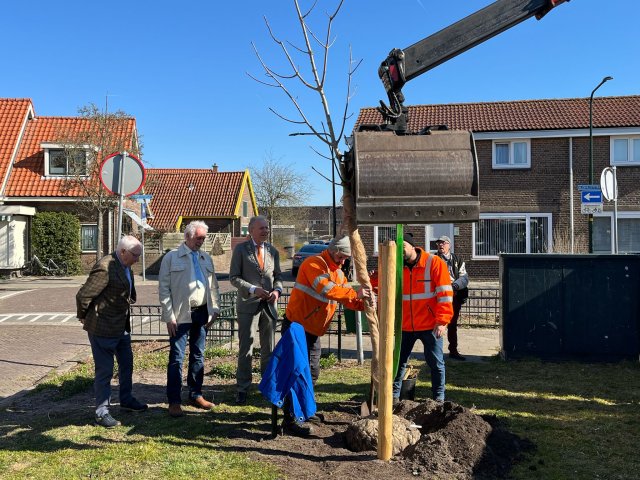
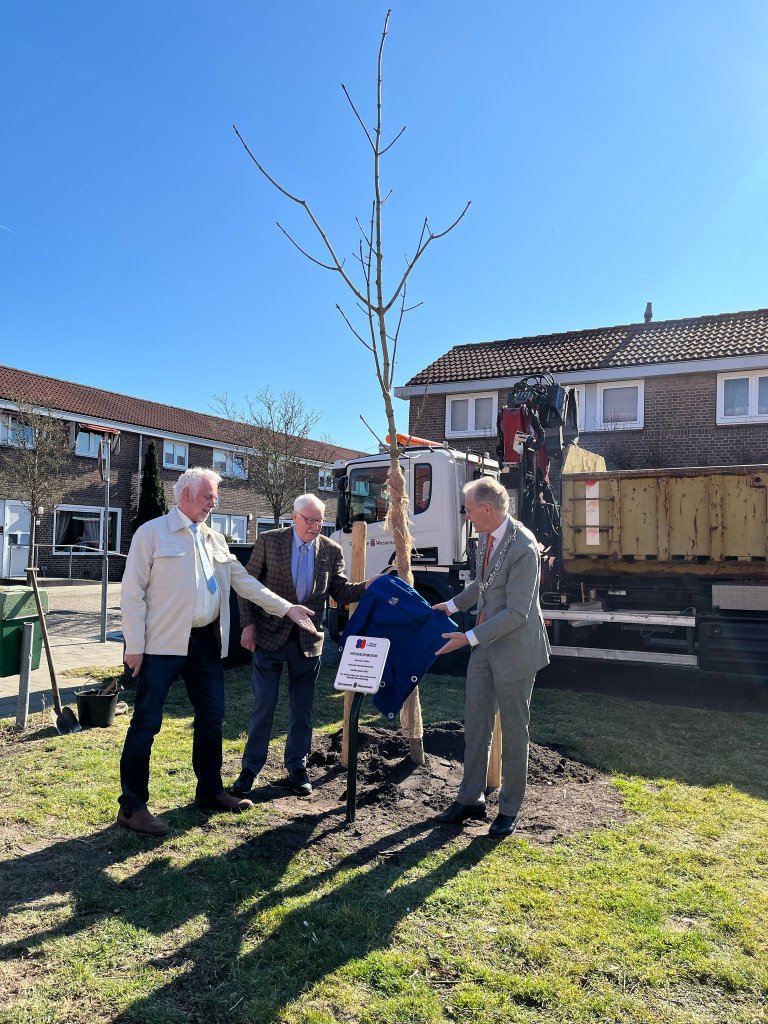
Students Jozefschool open WWII exhibit at Wassenaar library
A special exhibition on World War II opened in the Wassenaar library Wednesday afternoon. The exhibition was put together by pupils of the Jozefschool, who in recent weeks have been working on various pieces of work about this far-reaching period in history. The official opening was performed by the mayor of Wassenaar, who cut the ribbon together with the children.
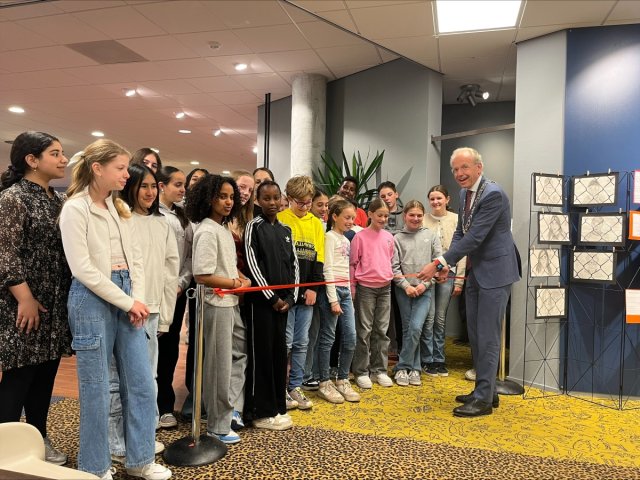
Importance of remembrance
The exhibit displays multiple subjects, including miniatures of Radio Oranje, The Secret Annex, a concentration camp, the atomic bomb, the D-Day landing and food drops. Also on display are voucher books, tulip bulbs and objects referring to daily life during wartime. After the opening, the mayor engaged the students in conversation about the importance of remembering and continuing to share knowledge about what happened during the war. "Especially your generation plays an important role in keeping these stories alive," Mayor Leendert de Lange emphasized. "Because if we don't keep telling, we forget."
Also special is the attention the students paid to the war in the Dutch East Indies. One of the teachers explained, "That is the piece of history we learned about that we as the Netherlands are not proud of." The exhibition will be on display at the Wassenaar library for the coming period. Visitors are cordially invited to come see the students' works and reflect on the past.
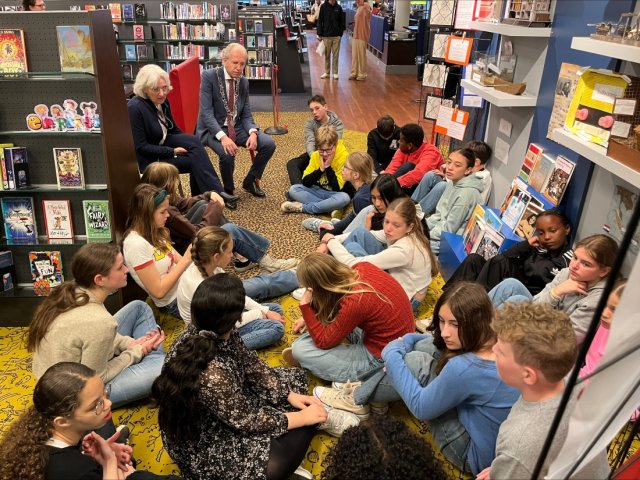
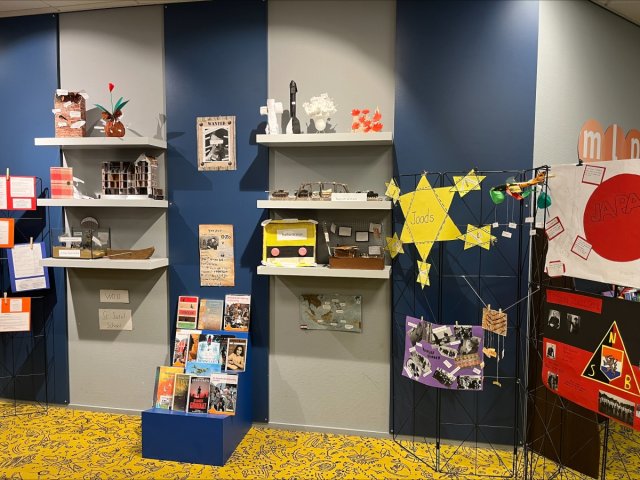
Speech by Mayor Leendert de Lange commemoration May 4
Ladies and gentlemen, boys and girls, residents of Wassenaar,
Tonight we are gathered here. In silence. In communion. In remembrance.
In this place, at this monument, we remember those who gave their lives. Civilians, soldiers, resistance fighters - women, men, children - who made the highest sacrifice, in the darkest periods of our history.
We reflect on them, on what they experienced. But we do so not only to look back. We also commemorate because it teaches us something about today. About our own time. About what it means to be free, and how fragile freedom can be.
Over the past few weeks, I have had the opportunity to teach classes at Nuts School and St. Joseph School, to grades 7 and 8. We talked about World War II, about remembrance, and about freedom. And I can tell you: it gave me hope. Because I saw children who genuinely wanted to understand, who asked questions, who felt that it is not just history - but our story.
Because it is. It is the story of Wassenaar. Of our parents, grandparents, neighbors. Of people who lived, hoped, cried, fought and lost in this village.
Wassenaar saw a lot during the war years. The first V2 rocket ever fired at England took off from Lijsterlaan on September 8, 1944. Moments later it crashed into London, with deadly consequences. A second rocket was launched almost simultaneously from the intersection of Koekoekslaan and Schouwweg.
You must imagine: it was a warm summer evening. And suddenly - a deafening roar, fire in the air, panic in the streets. People dived under tables, fled into basements. The unknown made it frightening. It was the beginning of a new chapter in the war - one in which the village itself, Wassenaar, became launching pad for a ruthless weapon. And thus also unwittingly part of the pain across the Channel.
And it didn't stop with that one day. The war touched Wassenaar in countless ways. We think of all those killed on the Waalsdorpervlakte, of the French commandos commemorated annually at the Wassenaar Battle, of the occupation of Valkenburg airfield. Of the food drops at Renbaan Duindigt; like a glimmer of hope in a winter full of hunger.
And we think of the Stolpersteine - those little brass stones in the sidewalk, in front of houses of Jewish fellow villagers who were deported. People with names, faces, lives. It is important that they are there. So that we literally dwell on what happened.
Tonight we remember them as well.
And that remembering goes beyond names. It's about stories. Sometimes big, sometimes small. But always poignant.
Like the story of Mrs. Zwaantje Knuppe-Mulder. In early May 1940 she was hit by a shrapnel from a bomb. She was the first war victim of our village. She was buried on Schouwweg, the cemetery that disappeared in the 1980s.
Or a story closer to myself. My grandmother was walking near the Kerkehout near the end of the war, along the Rijkstraatweg, with the baby carriage in which my father lay as a baby. A fighter plane flew low over and suddenly shrapnel flew around. My grandmother sought cover and shelter in the greenery. Nonetheless, an expose landed in the baby carriage. But ... it fortunately did not go off. What if that had been different? Then I wouldn't be standing here tonight.
Moments like that suddenly bring the war very close.
That is why I am grateful that we have recently been able to renovate the monument on the Schouwweg. And that a new plaque has been placed, doing justice to all the victims from Wassenaar. Through a QR code you can view the book of names. It is a tribute to them - and a way to keep their memory alive.
Because commemoration is more than a ceremony. It is a command. A call. To all of us.
I was struck the other day by a quote from a professor at VU University who researches happiness and well-being. She said:
"Resilience is an essential part of happiness."
And I thought: what a timely, perhaps urgent thought.
Because how resilient are we - as a society, as a village, as human beings?
What do we need to be resilient?
In a time of war near us, of threat, of disinformation, of tensions that permeate our own living rooms.
Maybe it starts with connection.
With seeking each other out.
Let's ask each other the following question:
"What do you need to be resilient?"
As family. As friends. As neighbors. As a community.
Because Wassenaar not only has an eventful history - it also has a strong future. We are blessed with a lot of knowledge, creativity and entrepreneurship. Let's combine those strengths. Let's mobilize our talents. Not only to commemorate - but also to build.
Building bridges instead of walls. Building peace. To resilience. To freedom.
Because freedom can never be taken for granted. It is something people died for. Something for which people raised their voices, left their homes, put their lives on the line.
And we ... we are their heirs.
Let us honor them. By remembering. By telling. And above all: by living in freedom, with responsibility.
So that we never forget.
Thank you.